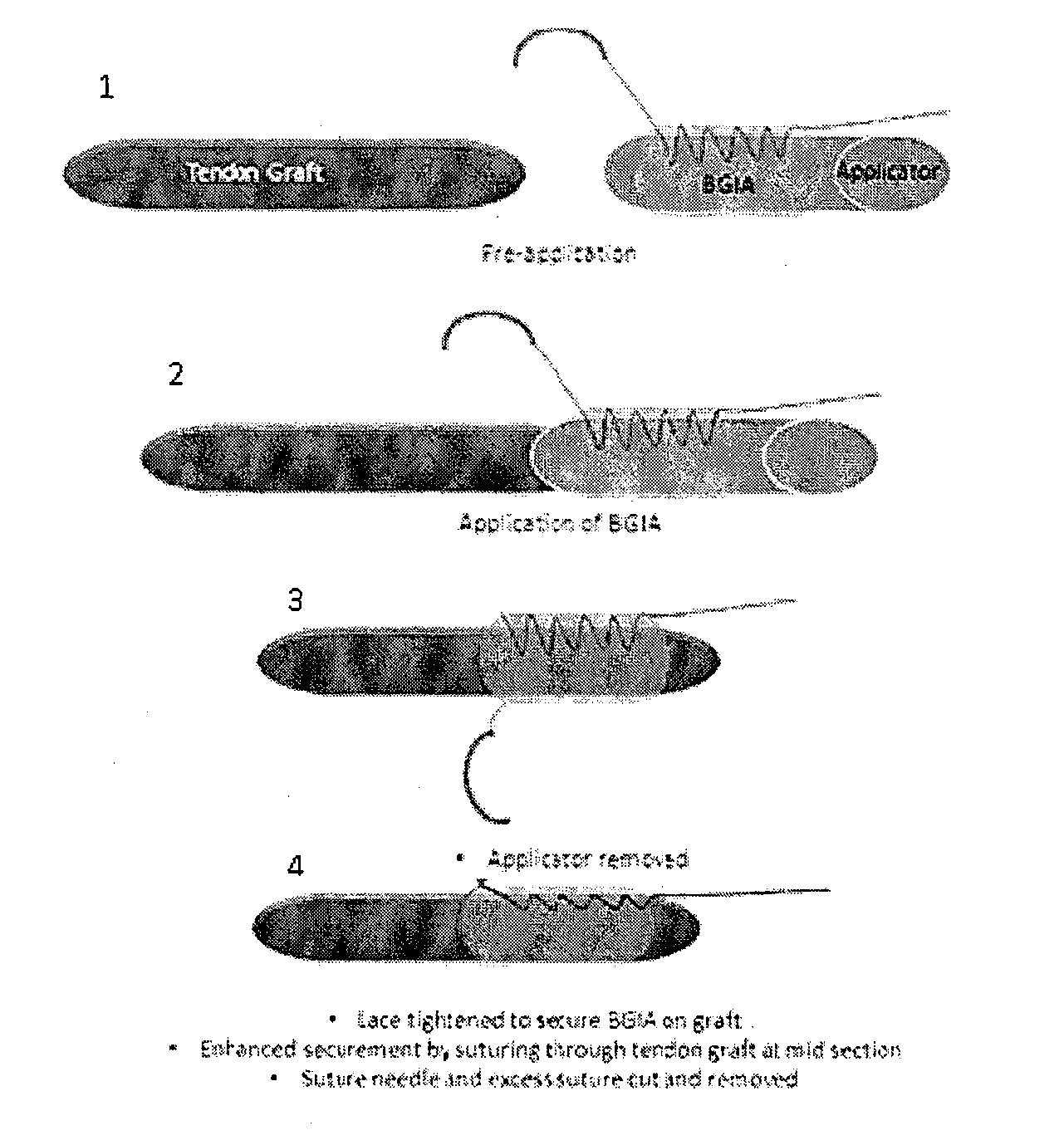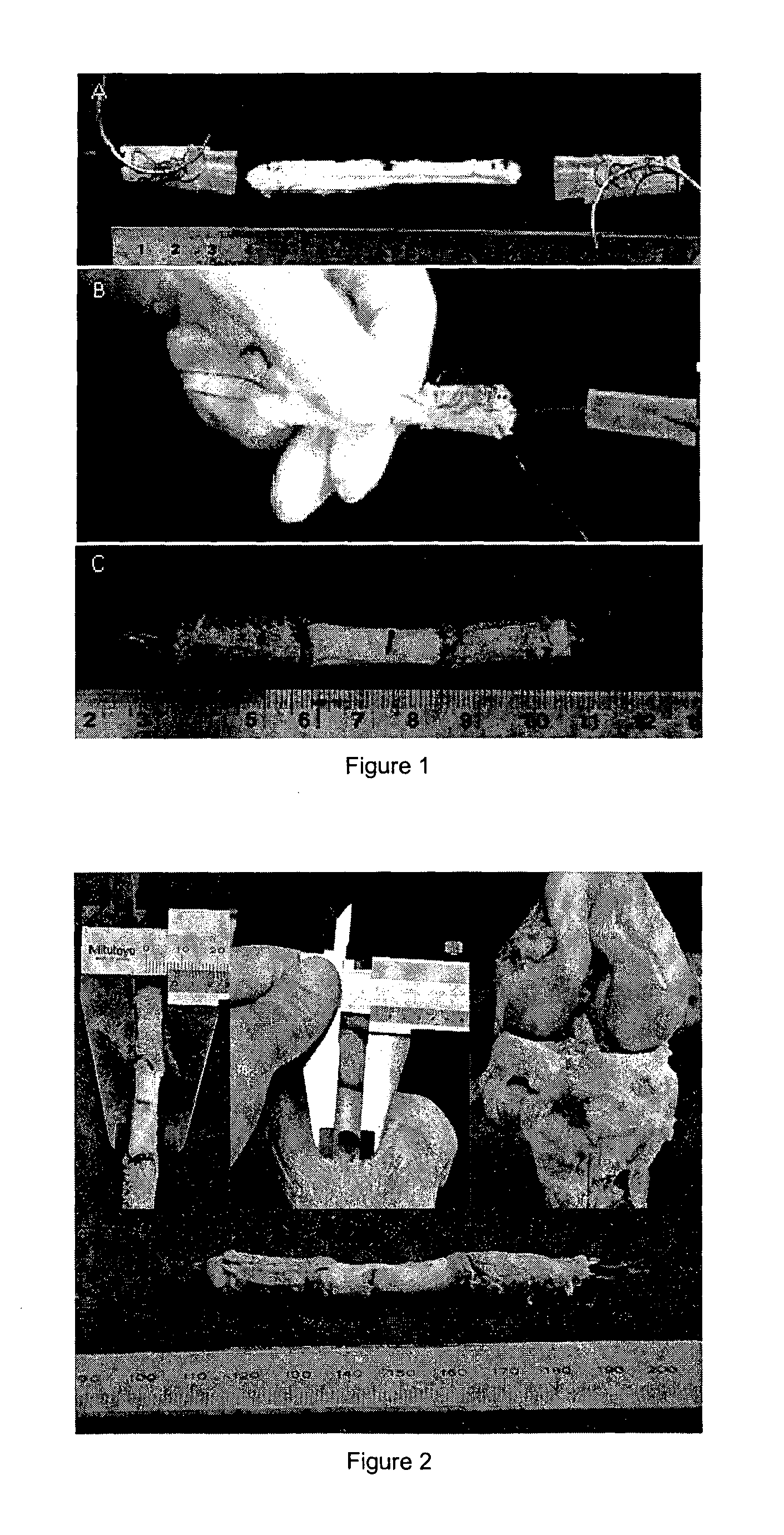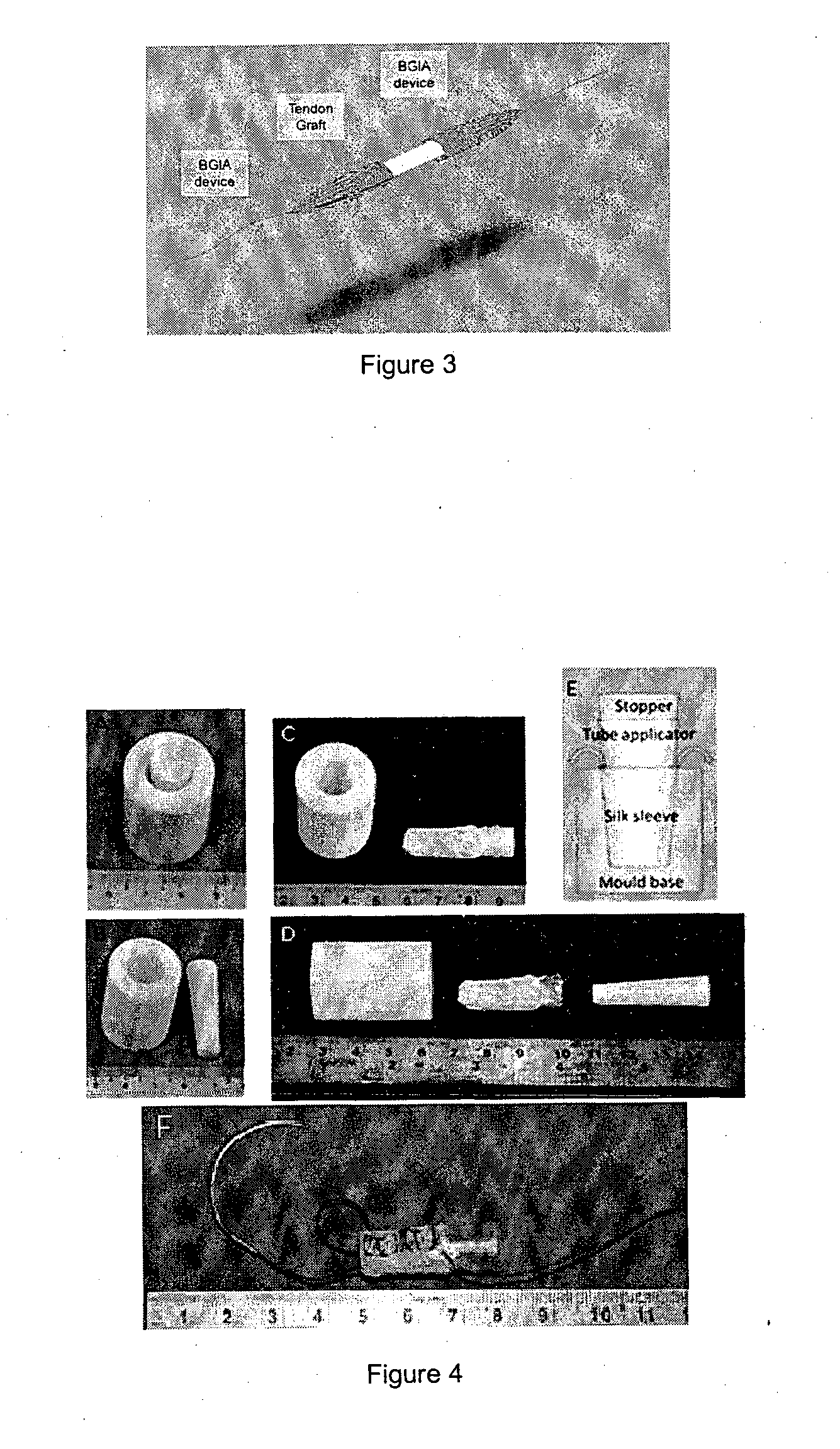Tissue interface augmentation device for ligament/tendon reconstruction
a technology of ligament/tendon reconstruction and tissue interface, which is applied in the direction of prosthesis, manufacturing tools, and ligaments, etc., can solve the problems of inferior integration between the tendon graft and the host bone, affecting the resurgence of acl damage, so as to promote osteointegration, promote reestablishment of continuous collagen fibers, and accelerate healing
- Summary
- Abstract
- Description
- Claims
- Application Information
AI Technical Summary
Benefits of technology
Problems solved by technology
Method used
Image
Examples
example 1
[0105]The TIA device was designed, developed and optimally fabricated using degummed knitted silk sleeve with low crystallinity nano-HA blended in the silk solution to form the sponge.
[0106]The knitted silk sleeve has three components: a knitted silk mesh, a silk sponge and low crystallinity nano hydroxyapatite (LHA). The knitted silk mesh was fabricated by using raw silk fibers with 24 needles on a knitting machine. Then, the knitted raw silk mesh was degummed to remove sericin thoroughly. The silk solution had a concentration of 6 wt.-% of silk fibroin in double distilled water. LHA was prepared by hydrothermal precipitation method: Briefly, calcium chloride, sodium phosphate tribasic and sodium carbonate were dissolved into the water individually at the same concentration. Calcium chloride and sodium phosphate were mixed together, then sodium carbonate was used to modify its crystallinity. The molar ratio of Ca:P:CO3 was 1.67:0.8:0.2. Subsequently, the mixture was agitated at 25°...
PUM
| Property | Measurement | Unit |
|---|---|---|
| length | aaaaa | aaaaa |
| diameter | aaaaa | aaaaa |
| diameter | aaaaa | aaaaa |
Abstract
Description
Claims
Application Information
 Login to View More
Login to View More - R&D
- Intellectual Property
- Life Sciences
- Materials
- Tech Scout
- Unparalleled Data Quality
- Higher Quality Content
- 60% Fewer Hallucinations
Browse by: Latest US Patents, China's latest patents, Technical Efficacy Thesaurus, Application Domain, Technology Topic, Popular Technical Reports.
© 2025 PatSnap. All rights reserved.Legal|Privacy policy|Modern Slavery Act Transparency Statement|Sitemap|About US| Contact US: help@patsnap.com



